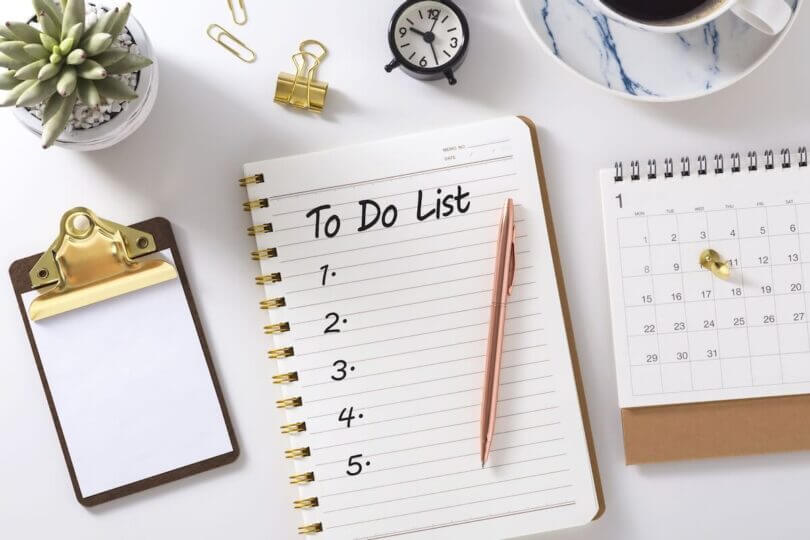Like in most aspects of life, it’s the little things you forget to do when you move that can sneak up on you. While the big tasks like packing and hiring movers are hard to miss, there are plenty of smaller steps that can easily slip through the cracks. Here’s the ultimate checklist of such overlooked moving activities so you can focus on settling into your new home without any hiccups.


According to a report done by the US Census Bureau, roughly 3 million Americans move across the country each year. Dive into conversations with any of them, and you’ll quickly uncover a common theme.
The most dreaded part about relocating to another state isn’t the packing or the goodbyes but the maze of paperwork and logistics.
Whether it’s your first time moving out or you’ve been to this rodeo before, paperwork can be tricky business. Because of that, it’s often pushed to the back burner either by choice or by accident. So, make sure to flip the switch and put it at the very top of things to remember to do when moving.
Let’s talk about updating your official documents and records – arguably less fun than shopping for your new apartment, but much more important. Imagine settling in only to find your bank statements are still heading to your old address, or even worse, a time-sensitive government document goes AWOL. Not the housewarming gift you’d hoped for, right? Therefore, updating your address on IDs, with banks, and on other official records isn’t just a bureaucratic tick-box. This is your golden ticket to ensuring your life’s admin doesn’t get lost in the move.
As we’re ticking off this bureaucratic cross-country moving checklist, let’s not forget about transferring utilities and services from your old residence to the new one. Here’s what typically requires special attention:
As you dive into the relocation whirlwind, taking a moment to organize important documents can be a game-changer. It will help you ensure that you’re leaving nothing vital behind, setting up the next chapter at the same time. Start by gathering all your essential paperwork – birth certificates, passports, leases, and financial records.
Create a dedicated folder for these documents, and consider making digital backups if you haven’t already. As you strike a deal with a relocation company, it’s also a good idea to put your contract with this bunch, having an overview of the long-distance moving services you’ve agreed upon always close by.

Once you’ve figured out the best time to make this leap, there’s one crucial task that demands your attention – informing your nearest and dearest about it. Friends and family are your support network, the ones who cheer you on from the sidelines, and in the midst of the chaos, it’s vital they’re in the loop. After all, nobody likes to feel left out, especially when it involves significant life changes.
Telling your friends and family can be as fun and creative as you make it. Think beyond the traditional phone call – why not send out personalized announcements or, better yet, host a goodbye party? This is the first step toward keeping in touch once you’re living thousands of miles apart.
While your friends and family top the list of people to inform, don’t forget the practical side – updating your address with relevant businesses and institutions. If you’re relocating for a job, make sure to notify them when exactly you are coming in. It might seem obvious, but in the chaos of boxes and packing materials, it can be pretty easy to forget.

Packing can often feel like a colossal part of relocating to another state, consuming time, energy, and patience in equal measure. Opting to hire a reliable relocation company such as Trico Long Distance Movers and book comprehensive packing services is the golden ticket to a stress-free move. They’ll even handle any specific needs you may have, like convenient storage solutions or customized wooden crates for your most prized possessions.
However, whether you’re hiring a company or going solo, certain relocation hacks and packing strategies can significantly smooth out the process. Here are a few of these essential relocation tasks you shouldn’t forget.
In the rush of moving-day preparations, creating a household inventory is a crucial step that’s often overlooked. This detailed list of your possessions not only aids in organizing and tracking your items during the journey but also becomes invaluable in case of loss or damage.
Start by going room by room, listing items as you pack them, and consider taking photos of valuable or fragile items. Do it in as much detail as you can, as it can come in handy when it’s time to unpack as well, letting you verify that nothing is left behind.
While it might seem sufficient to scribble a generic label on your boxes, taking the time to do it in detail can save you a world of hassle on the other end of your move, just like the relocation inventory you’ve made. Moreover, it’s a crucial preparation for cross-country movers, as these labels will let them know which boxes should be handled with extra care.
Among the things people forget to pack, a bag of essentials is often the most common one, as it’s not seen as, well, essential. But imagine arriving at your new home only to realize your toothbrush is buried in one of the dozens of identically sealed boxes. It’s not exactly what you’re hoping for on your first night, right?
This essentials bag should include everything you might need for the first few days – personal hygiene products, a change of clothes, chargers, important documents, and even some snacks and basic utensils. Think of it as your moving survival kit, ensuring you’re comfortable while you start to settle in and unpack at your own pace.
As you prepare to bid farewell to your old home, a couple of last-minute checks are needed for that extra peace of mind. So, before you lock the door for one final time, make sure you:
Before you officially bid adieu to your old abode, it’s time for one last walkthrough – a final chance to ensure everything is in its place and nothing has been overlooked. A lot of relocation stress can stem from this kind of uncertainty. So, take a stroll through each room, checking cabinets, closets, and nooks and crannies for any forgotten items.

Before the truck of your chosen long-distance moving company rolls up to your new doorstep, there’s a bit of groundwork to be done. From safety checks to a bit of sprucing up, taking care of these details ensures your transition into the new space is as smooth and welcoming as possible.
Before you start unpacking and decorating, ensuring the safety of your new humble abode is paramount. It’s the foundation upon which you’ll build your daily routine. Here are the essential safety checks you definitely shouldn’t miss:
While it might be tempting to skip straight to unpacking and arranging your belongings, a thorough clean is something you definitely shouldn’t let slip through the cracks. Cleaning every nook and cranny, from the insides of the cabinets to the corners of each room, sets a fresh and welcoming tone for this next chapter. It’s the first crucial step of turning a house into a home.

In the whirlwind of a move, it’s all too easy to overlook certain tasks, even the ones that are considered essential. From updating official documents to conducting last-minute checks, each step plays a vital role in the whole ordeal, contributing to a successful transition and starting off your next chapter on the right foot.
As you gear up for the upcoming journey, remember that you don’t have to tackle it alone. Better yet, you don’t have to waste time googling “long-distance movers near me” – our team is here to handle the heavy lifting, letting you focus on the details of settling into your new abode. Contact Trico Long Distance Movers today to discover how we can help you relocate with ease and peace of mind, no matter where your journey takes you.
To ensure you don’t forget anything important, create a detailed inventory checklist and systematically go through each room. Additionally, designate a specific area for essential items that you’ll need immediate access to, such as documents, toiletries, and a change of clothes.
One week before getting to your new house, focus on finalizing packing, confirming moving arrangements with your chosen company, and tying up loose ends, such as canceling or transferring utilities and forwarding your mail. It’s also a good time to confirm any arrangements with friends or family who are assisting with the move.
Yes, there are numerous checklists available to help remember tasks. You can find printable versions online or use apps that offer customizable checklists tailored to your specific needs and timeline.